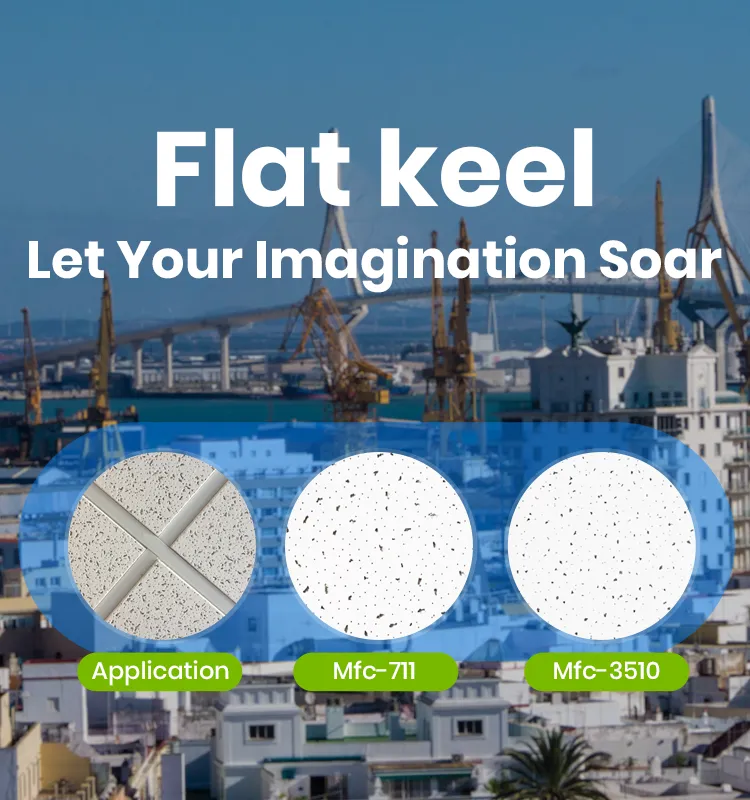- Afrikaans
- Albanian
- Amharic
- Arabic
- Armenian
- Azerbaijani
- Basque
- Belarusian
- Bengali
- Bosnian
- Bulgarian
- Catalan
- Cebuano
- Corsican
- Croatian
- Czech
- Danish
- Dutch
- English
- Esperanto
- Estonian
- French
- German
- Greek
- Hindi
- Indonesian
- irish
- Italian
- Japanese
- Korean
- Lao
- Malay
- Myanmar
- Norwegian
- Norwegian
- Polish
- Portuguese
- Romanian
- Russian
- Serbian
- Spanish
- Swedish
- Thai
- Turkish
- Ukrainian
- Uzbek
- Vietnamese
lis . 09, 2024 07:34 Back to list
Understanding Mineral Fiber Ceiling Options for Acoustic and Thermal Performance
Understanding Mineral Fibre Ceilings Benefits and Considerations
Mineral fibre ceilings, commonly known as acoustic ceilings or suspended ceilings, have gained popularity in various architectural applications, particularly in commercial and industrial settings. These ceilings are crafted from a composite of natural minerals, often including gypsum, cellulose, and other fibrous materials. They are renowned for their excellent sound absorption properties, aesthetic versatility, and fire resistance, making them a go-to choice for designers and architects alike.
Composition and Properties
The primary materials in mineral fibre ceilings are derived from natural minerals, which are processed and formed into tiles or panels. The mineral composition allows for a lightweight yet durable ceiling solution that contributes significantly to improved indoor air quality. Furthermore, the fibrous nature of the material enables it to absorb sound, reducing echoes and providing a conducive environment for workplaces, classrooms, and public spaces. The characteristic acoustic properties are measured using a Noise Reduction Coefficient (NRC), a critical factor for spaces where noise control is necessary.
Aesthetic Versatility
Mineral fibre ceilings come in a variety of textures, patterns, and colours, allowing for significant freedom in design. They can be painted or treated to match the specific aesthetic requirements of a space, whether a sleek corporate office or a creative studio. Additionally, the panels can be easily cut and fitted to accommodate different architectural needs, resulting in a seamless integration with lighting and HVAC systems. This design flexibility is a major reason for their prevalence in modern construction projects.
Installation and Maintenance
The installation of mineral fibre ceilings is generally straightforward, involving a suspended grid system that supports the ceiling panels. This design not only facilitates quick installation but also allows for easy access to the spaces above the ceiling, such as for electrical or plumbing work. Therefore, any necessary changes or maintenance can be performed without significant disruption.
In terms of maintenance, mineral fibre ceilings are relatively easy to care for. Regular dusting and occasional cleaning with a damp cloth are typically sufficient to maintain their appearance. However, it's important to note that they can be susceptible to moisture damage. Therefore, it is crucial to ensure that the environment is well-ventilated and free of excessive humidity to extend the lifespan of the ceiling panels.
mineral fibre ceiling

Acoustic Performance
One of the most significant advantages of mineral fibre ceilings is their acoustic performance. Noise pollution can have detrimental effects on productivity and well-being in both workplace and educational settings. By employing mineral fibre ceilings, designers can effectively manage sound levels, fostering a better auditory environment. High NRC ratings signify the capability of a ceiling material to absorb sound and prevent it from traveling to adjacent spaces, thus creating a more peaceful atmosphere.
Fire Resistance and Safety
Safety is always a paramount concern in any building project. Mineral fibre ceilings are typically fire-resistant, offering compliance with fire safety regulations. Many products are designed to meet specific fire ratings, reducing the risk of flames spreading in the event of a fire. The inherent properties of the mineral materials contribute to a safer environment, providing peace of mind for building occupants and owners alike.
Environmental Considerations
As sustainability becomes increasingly vital in modern construction, mineral fibre ceilings are frequently manufactured using recycled materials. Many producers adhere to strict environmental standards, ensuring their products are safe for both human health and the planet. Opting for eco-friendly mineral fibre ceilings can contribute positively to a building's overall green certifications, such as LEED.
Conclusion
Mineral fibre ceilings represent a versatile, efficient, and aesthetically pleasing solution for a wide range of architectural applications. Their combined acoustic benefits, fire resistance, and ease of installation make them a preferred choice among architects and contractors. As trends shift towards sustainable construction practices, mineral fibre ceilings will likely remain a popular option, catering to the growing demands for functional and environmentally friendly building materials. Whether for commercial offices, educational institutions, or public spaces, the advantages of mineral fibre ceilings cannot be overlooked.
-
Transform Interiors with PVC Gypsum Ceiling: A Stylish, Durable, and Moisture-Resistant SolutionNewsMay.19,2025
-
The Smart Interior Upgrade: Discover the Durability and Versatility of Gypsum Ceiling Access Panel SolutionsNewsMay.19,2025
-
The Smart Choice for Interior Design: Discover the Value of PVC Gypsum Ceiling SolutionsNewsMay.19,2025
-
Mineral Fiber Ceiling Tiles: The Smart Blend of Performance and AestheticsNewsMay.19,2025
-
Mineral Fiber Ceiling Tiles: The Superior Choice Over Gypsum for Sound and Fire SafetyNewsMay.19,2025
-
Mineral Fiber Ceiling Tiles: Eco-Friendly Strength and Style for Every CeilingNewsMay.19,2025







